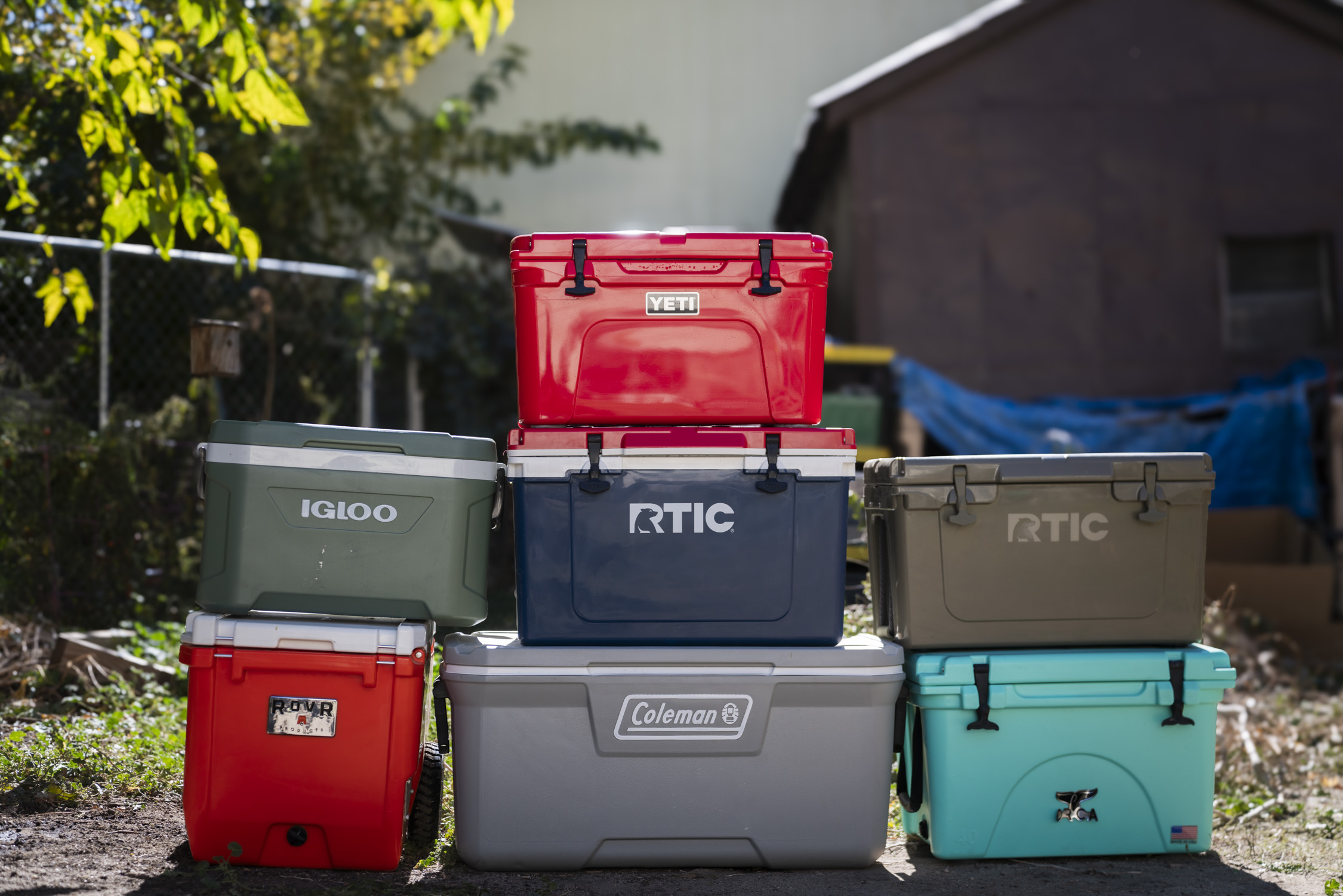Whether you’re headed to the beach or a backyard barbecue, finding the best cooler means balancing ice retention, durability, and price. Lucky for you, we’ve tested dozens of coolers in real-world scenarios to help you find the right pick.
We’ve put coolers through the wringer: loading them with ice and drinks, hauling them on camping trips, stashing them in hot cars, and dragging them along to swimming holes. Standouts include the indomitable YETI Tundra 45, which continues to set the standard for durability and multi-day performance, and the new Igloo Recool, a compostable cooler made from recycled paper pulp that offers a sustainable alternative for shorter outings.
Every cooler we field test also goes through a standardized ice retention test, giving us objective results to compare alongside our real-world use. From premium hard-sided builds to lightweight, eco-friendly options, we dig into cooling performance and accessories to help you choose the right one for your next adventure.
Editor’s note: As of October 6, 2025, we’ve added the field-tested recycled and reusable Igloo Recool 16qt Cooler to this guide. Staff Writer Heather Balogh Rochfort also added a How to Choose section and answered two important questions in the FAQ: How long do they keep ice, and What size do I need?
The Best Coolers of 2025
Best Overall Cooler
9.4/10 Rating
Best Budget Cooler
6.2/10 Rating
Best Wheeled Cooler
8.7/10 Rating
Best Recyclable Cooler
7.7/10 Rating
Best Lightweight Cooler
8.0/10 Rating
See more picks
-
Rotomolded design -
Retained ice for the full 10 days of testing -
Dry goods basket included -
IGBC-certified
-
Inexpensive -
Ultra lightweight -
Made with post-consumer plastic
-
Lower quality insulation -
No drain plug -
Low durability
-
Big, sturdy wheels for easy transport -
Comes with removable dry bin -
Compact but still has decent capacity
-
Expensive -
Very heavy -
Ice doesn’t last as long because there is less room for ice
-
Compostable and biodegradable materials -
Ultra-lightweight -
Far more durable than expected -
Delightfully affordable
-
Decent ice retention but still limited compared to pricier, hard-sided options -
Holds fewer cans than reported
-
Lightweight -
Affordable -
Two drain plugs -
Good ice retention
-
Still less ice retention than the rotomolded Yeti or Orca -
Injection-molded therefore less durable than rotomolded models
More Coolers, Field Tested
The following coolers didn’t make the top of our list, but we’ve included them for their unique features or superior Ice retention, and a few are great budget alternatives.
-
Dry Zone storage helps separate and protect food items -
Perfect size for single-day events -
Competitive ice retention performance
-
Do not forget items left in drawer -
Cleaning drawer is a necessity -
Higher end price
-
Rotomolded construction -
Easy-to-use latches -
Light for its size
-
Hard to carry for one person when fully loaded -
Easy-to-use latches don’t seal in air as well as other coolers we tested -
Not IGBC certified
-
Lots of features -
Drain plug with tether -
Rotomolded design
-
Not IGBC-rated -
Heavy -
Latches not as airtight as other brands
-
Inexpensive -
Large capacity -
Lightweight
-
No wheels -
Requires two people to carry when loaded -
Cheap materials
-
Keeps ice just as long (if not longer) than competition -
Easy to move around, even when full -
Latches securely -
Nice chrome-plated corner details -
Release port for draining while closed
-
Plug not attached -
Latches get in the way of closing
-
Easy to transport -
Cool closure system
-
Super-portable -
Budget-friendly
-
Short ice retention due to small size
Cooler Comparison Chart
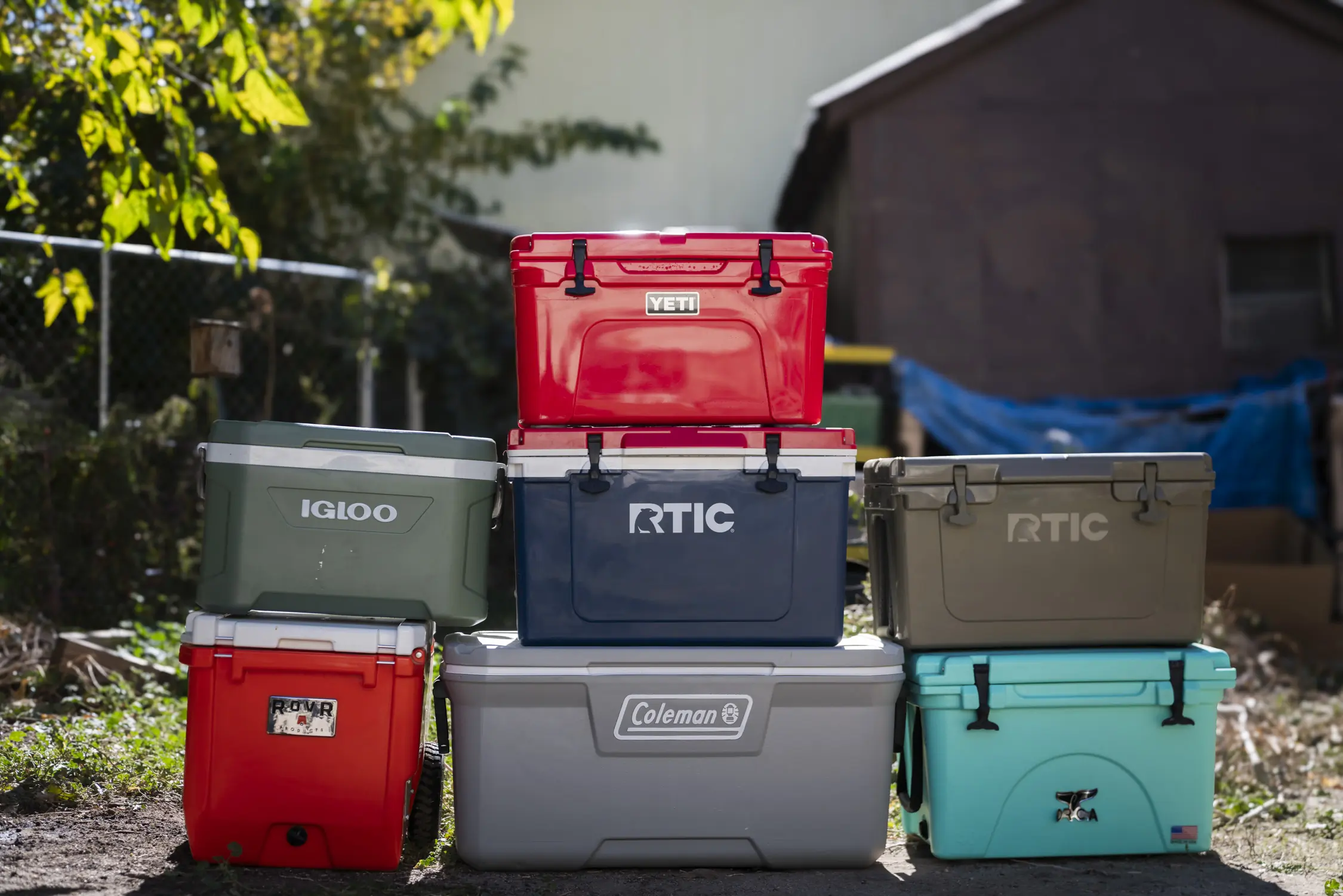


How We Tested Coolers
Our expert gear testers have been reviewing coolers since 2014, meticulously researching dozens of the best coolers on the market to continuously update this review. This is an extensive look at seven of the best coolers you can find today.
Our Expert Testers & Testing Grounds
Lead author Heather Balogh Rochfort is an avid outdoor enthusiast based in Colorado who spends most of her waking hours hiking, biking, camping, trail running, or skiing. Coincidentally, she also loves food so toting a cooler along on all of her adventures is a given.
Miya Tsudome brings over 3 years of gear reviewing experience combined with over a decade of being a serious outdoor enthusiast to help bring this current review to life. Having spent many months living out of her car in pursuit of rock climbing adventures all over the country, she knows that having a good cooler during the hot summer months can make a world of difference.
Our Testing Process
Each product was tested over several weeks, and taken out on different occasions for real-world applications — overnight camping trips, backyard barbecues, and day trips to the local swimming hole. The most recent lineup of coolers was tested in October in the high desert of Bishop, Calif. The average temperature was in the high 70s to low 80s for the majority of the month.
Each cooler was rated based on its performance in our ice retention test, its insulation and materials, durability, extra features, weight, ease of transport, and ease of maintenance and cleaning. The coolers that ranked the highest in specific categories were assigned an award in our top picks.
Also, we did not include soft coolers, backpack coolers, or electric coolers in this test.
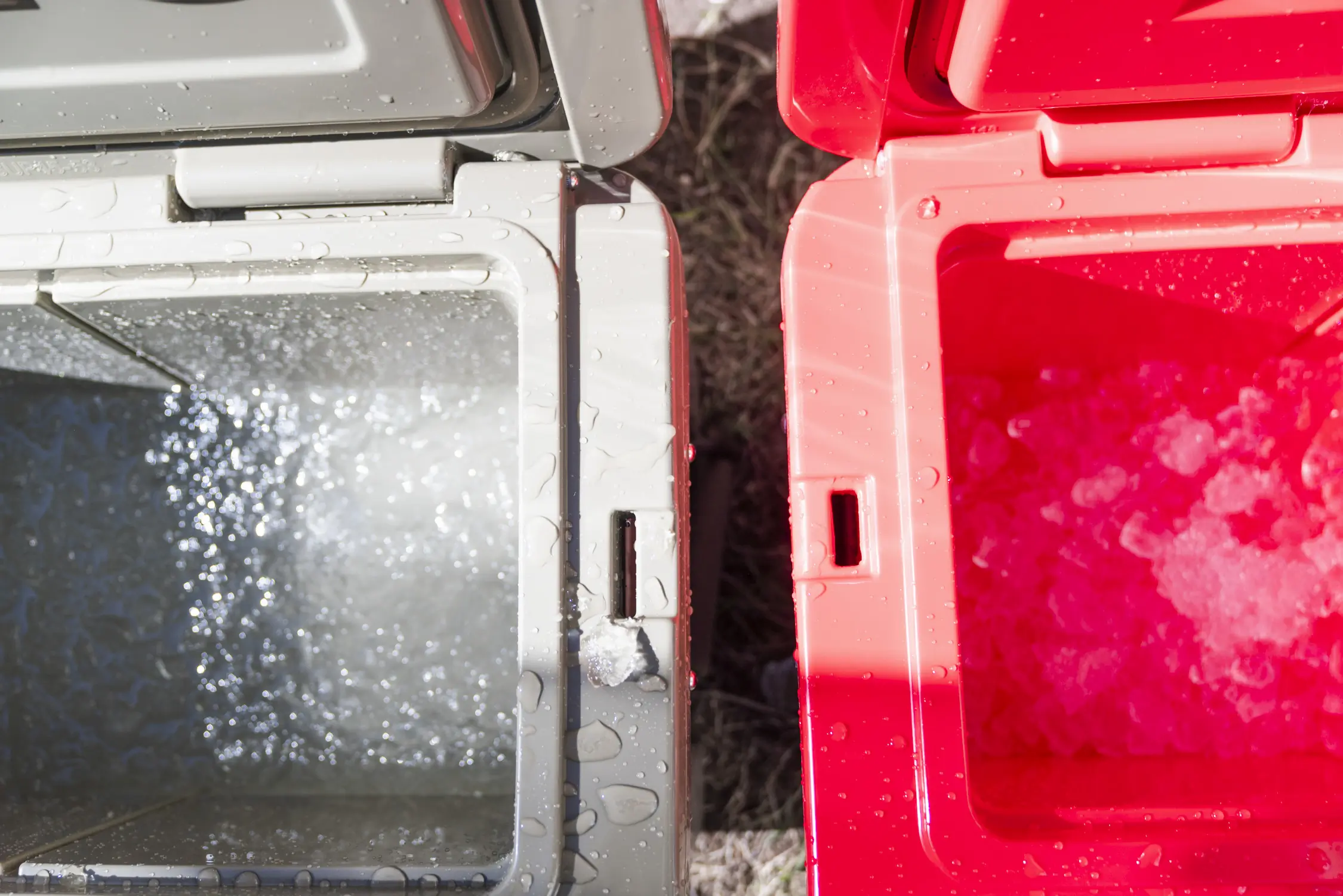



Ice Retention Test
For our ice retention test, we filled each cooler up 85% of the way with the same type of bagged, cubed ice. Each cooler stayed indoors before the test, to ensure that their starting temperatures were all about the same. It’s recommended to pre-chill a cooler for the best ice retention, we did not prechill any of the coolers to best mimic how we would actually use them.
For the actual test, we stored the coolers outside in an area that was mostly shaded during the day, with a few hours of direct sun exposure and temperatures that varied from 35 degrees overnight to 100 degrees in direct sun. This was also our idea of the best imitation of how these coolers would typically be stored outdoors.
Variables that can affect ice retention include the ice quantity, outside environment and temp, exposure and amount of sunlight, type of ice (crushed, block, cube, dry), airspace, and more. In order to find the best of the best coolers, it was crucial for us to do a direct comparison.
We checked each cooler’s ice retention/melt rate once a day and recorded the time and temp for each one. We also noted the time once each cooler’s ice was fully melted. The YETI Tundra 45 took first place, retaining ice for the full 10 days, and having the coolest interior temperature 48 hours in at 27.3 degrees F.
The RTIC Ultra-Light came in next, retaining useable ice for 8 days with interior temperatures 48 hours in at 29.2 degrees F and 31.2 degrees F.
While the Igloo ECOCOOL had an interior temperature of 34.6 degrees F at the 48-hour mark, it surprisingly still had some ice left inside after 10 days. The RovR RollR 45 only lasted 6 days with useable ice, but it also had the least amount of ice inside out of all the coolers due to the useable space.
In contrast, the Coleman 316 still held a large quantity of ice after 10 days. This is more so due to the amount of ice that it holds in its 120-quart interior rather than due to its insulation properties. More ice = more ice retention.
This test was not meant to be purely scientific, but rather to reflect the realistic use of a cooler outdoors and accurately compare cooler performance. To keep it fair, we made sure that all coolers were subjected to the same variables and criteria as much as possible.
It is worth mentioning that this test was not performed in the height of summer, but rather during a time when overnight temperatures dipped fairly low, causing the ice to melt much slower than if this test was done in July.
If you’re tired of ice and ok spending more money for an actual portable refrigerator, check out GearJunkie’s guide to the best Electric Coolers.
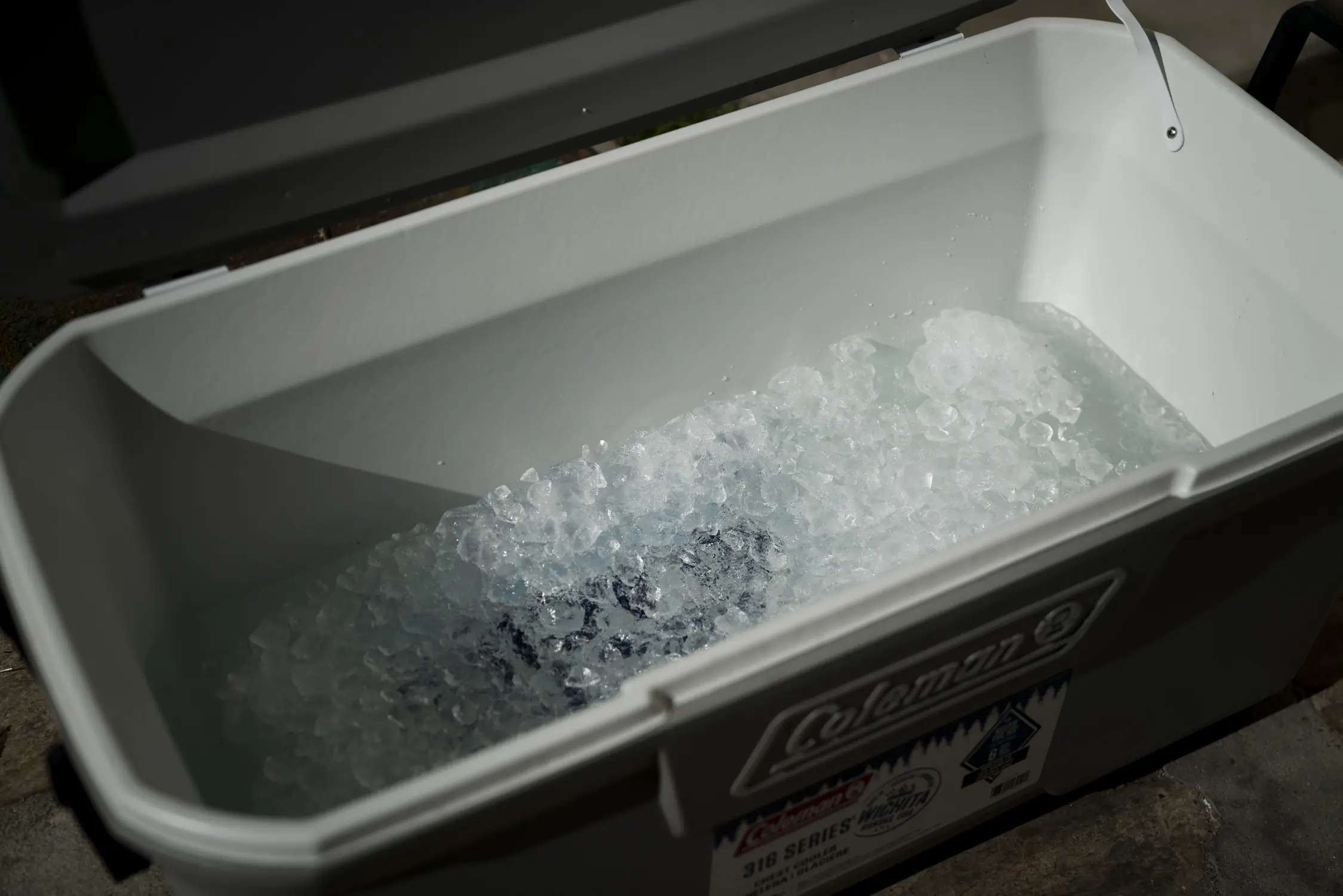



Buyers Guide: How to Choose the Best Cooler
Cooling Performance
Insulation & Materials
Coolers have a long and storied history. From a humble beginning as a wooden box with an interior tin chamber invented by Thomas Moore Jr. in 1802, to the decently insulating styrofoam boxes that came from the World War II era, to the plastic exterior coolers we know today pioneered by the Coleman company, coolers have come a long way.
Historically, coolers have been made with interior and exterior shells of plastic, with hard foam in between. Many basic coolers are still made this way today, such as the Igloo ECOCOOL and the Coleman 316.
In 2006, two brothers named Roy and Ryan Seiders revolutionized the cooler market with their rotational molding or “rotomolding” design. This involves a heated plastic mold that is rotated continuously while powdered polyethylene is added to it to create a uniform thickness. They also pioneered the use of polyurethane instead of styrofoam as insulation, which created superior ice retention.
YETI was the company born from its design and is considered the gold standard in coolers today. Many companies have since adopted the rotomolding technique for their coolers. Now, a majority of premium coolers like the YETI Tundra 45 are rotomolded.
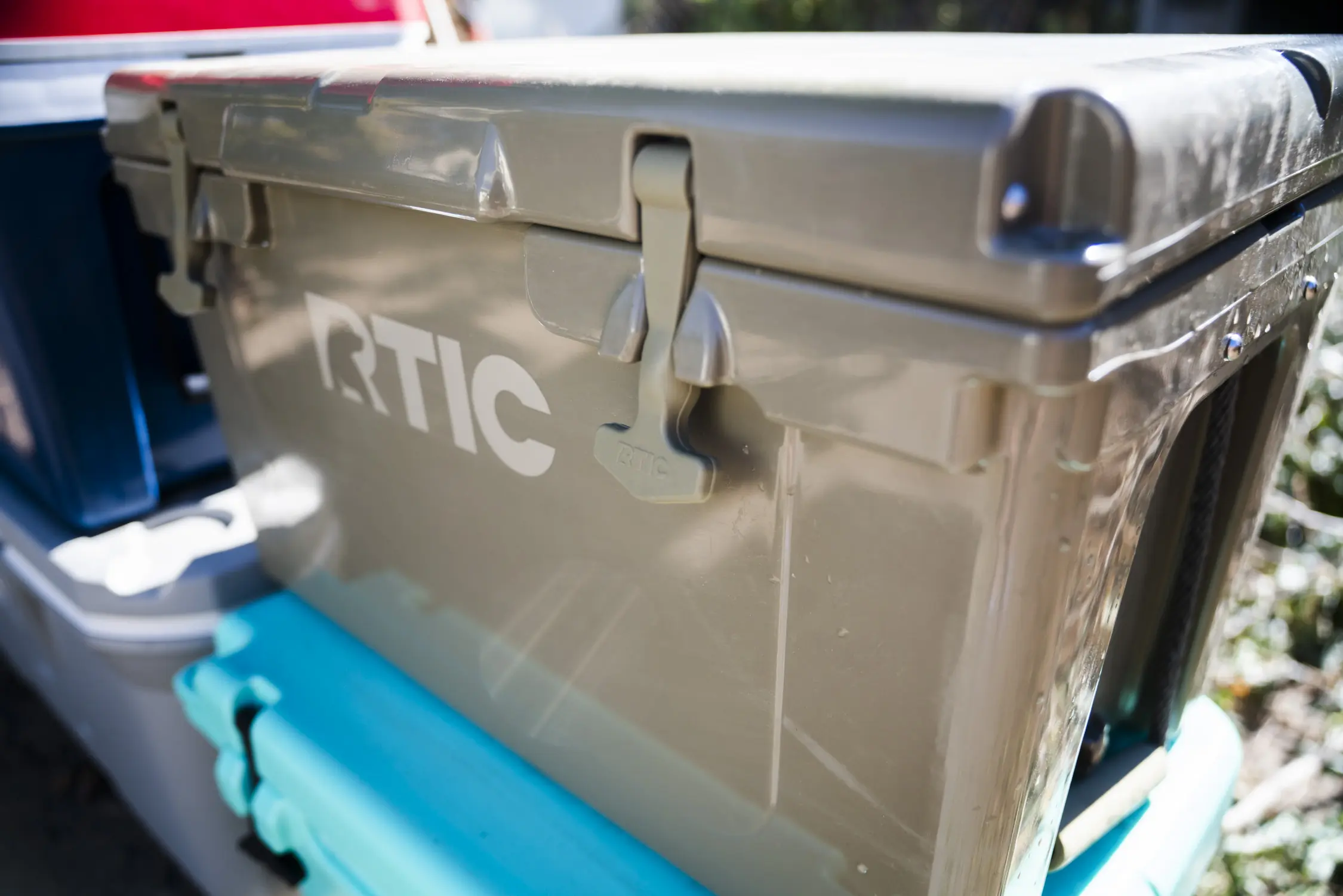



Coolers use a few different sorts of foam or petroleum-based insulation, typically double-walled. YETI employs its pressure-injected polyurethane foam, while Igloo uses its proprietary THERMECOOL insulating foam.
While rotomolded coolers offer the best ice retention and durability by far, they are also considerably more heavy and expensive. The trade-off for lighter, less expensive coolers, however, will be in their performance and durability.
More recently, manufacturers have introduced coolers made from recyclable or compostable materials. These models, such as the Igloo Recool Cooler, are built from molded paper pulp with plant-based binders instead of petroleum-derived foams. Their insulation is modest compared to plastic or rotomolded designs, but they offer a sustainable alternative to disposable Styrofoam chests. Best suited for short-term use like picnics, concerts, or day trips, compostable coolers trade multi-day ice retention for environmental responsibility.
Seals
The highest-performing coolers in our lineup all have heavy-duty rubber gaskets that work to seal their lids airtight. In order to keep your cooler as consistently cold as possible, you need to be able to trap that cold air inside and keep it closed.
The best coolers will implement the same materials and mechanisms as deep freezers will, with rubber gaskets that create airtight seals, and sturdy, thick latches that pull the lids tight. The Igloo ECOCOOL, the Igloo Recool and the Coleman 316 are the only coolers in our lineup that do not implement this feature.
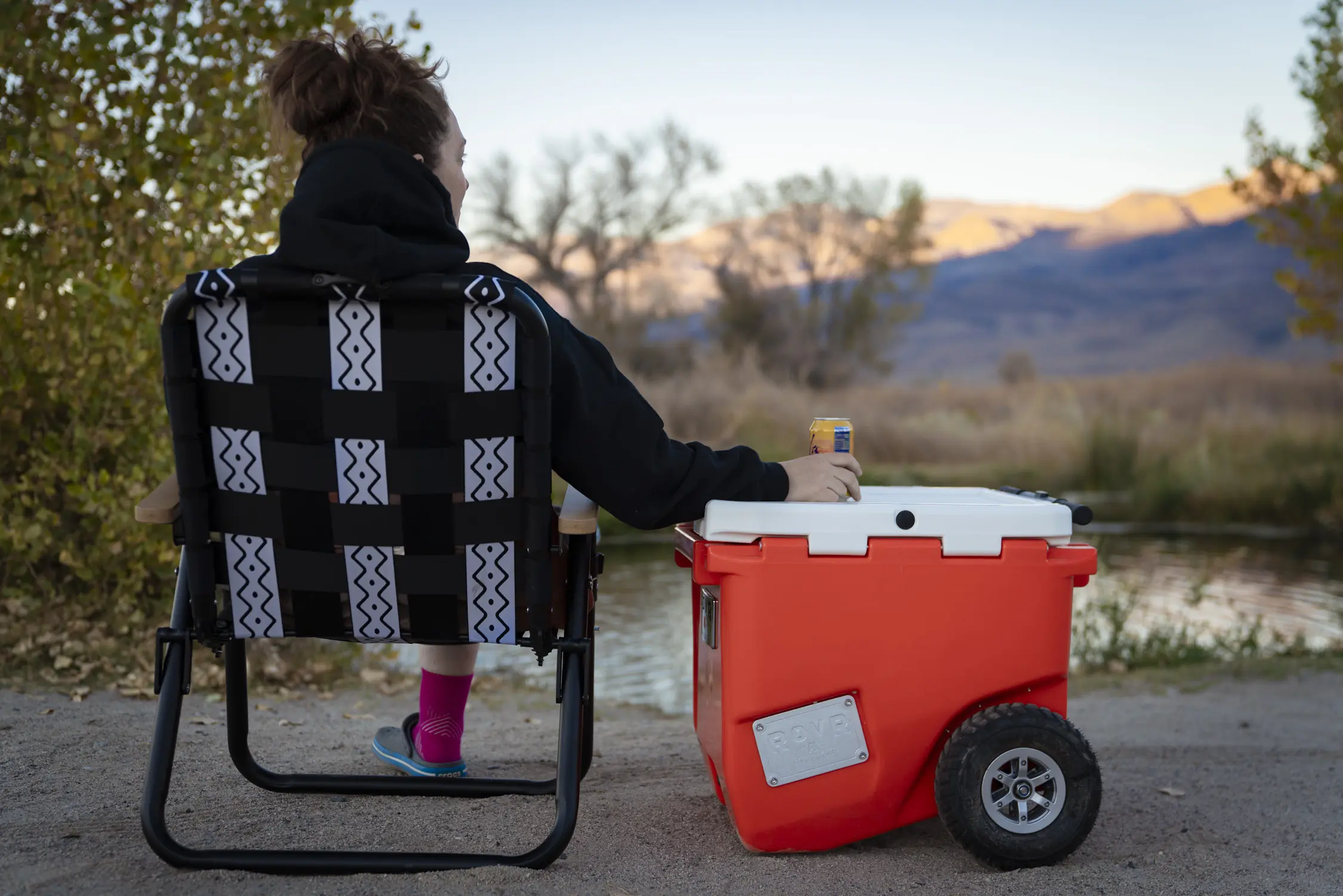



Exterior Color
Another thing to consider if you want the absolute best-performing cooler you can buy is the color you choose. When measuring the outside temperature of each cooler during our ice retention test, the lighter-colored coolers consistently had lower exterior temperatures. So although that dark grey cooler might be more your style, the white one might be the better choice.
Size & Volume
Read the full article here




